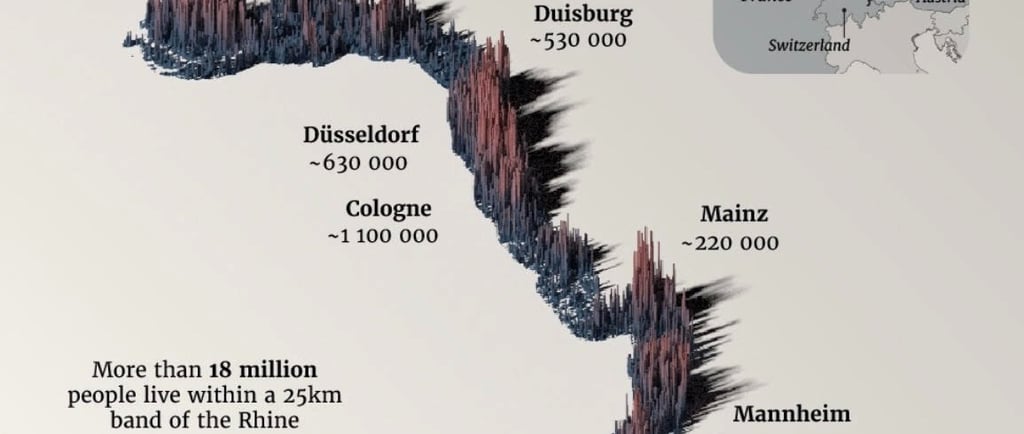The Rhine River: Europe's Vital Waterway


Introduction to the Rhine River
The Rhine River stands as a prominent feature in the geography of Europe, serving as a critical artery that borders several countries. Spanning over 1,230 kilometers, it flows through the heart of the continent, impacting economies, cultures, and environments along its path. This majestic river begins its journey in Switzerland, meanders through Austria, Liechtenstein, Germany, and France, ultimately concluding its course as it empties into the North Sea in the Netherlands.
Geographical Significance of the Rhine
The Rhine River is not only noteworthy for its length but also for its vital role in connecting numerous European nations. As it traverses diverse landscapes, the Rhine nurtures lush valleys, historic cities, and remarkable ecosystems. The riverbanks are adorned with charming villages and significant urban centers that have flourished over centuries due to their proximity to this essential waterway.
In terms of strategic importance, the Rhine acts as a natural border between several countries, thereby serving as a conduit for trade, transport, and cultural exchange. It supports an extensive network of waterways that facilitate the movement of goods, enhancing regional economies significantly. With over 18 million people living within close reach of its banks, the Rhine River undoubtedly plays an indispensable role in societal interactions and commercial activities.
Cultural and Economic Impact
The Rhine River has integrated itself into the cultural fabric of the regions it flows through. Numerous myths and legends are associated with its waters, inspiring poets, painters, and musicians throughout history. The romantic landscapes that line the river have also made it a popular destination for tourists, who flock to its scenic views and historical landmarks.
From an economic perspective, the Rhine serves as a vital waterway for the transport of raw materials and finished products across Europe. Major industries, including shipping, agriculture, and tourism, have thrived along its banks. The river's accessibility has resulted in significant and sustained economic growth, allowing regional industries to leverage its transportation capabilities.
In conclusion, the Rhine River exemplifies the intricate relationship between geography and human activity. As it winds through Switzerland, Austria, Liechtenstein, Germany, France, and the Netherlands, it has become more than just a body of water; it has evolved into a lifeline for millions, symbolizing resilience, connection, and the intertwining of cultures. Understanding the multifaceted role of this incredible river is essential to appreciate its enduring importance within the European landscape.
